2nd Annual Women in Microscopy Conference
The keynote speaker was amazing and inspiring! ”
WIM conference attendee
The second annual Women in Microscopy conference was virtually held by the NUANCE Center and Microscopy Society of America Student Council, which gathered nearly double the registrants and attendees as the inaugural year, representing 25 different countries. The conference held space for important conversations on career challenges, diversity, and work-life balance alongside research presentations on materials science, biology, and environmental sciences.
Conference co-chairs Tirzah Abbott of the NUANCE Center and Stephanie Ribet of the MSA Student Council and Dravid Research Group; Professor Vinayak Dravid, director of the NUANCE Center; and Aubrey Penn, president of the MSA Student Council welcomed participants from around the world to the event. Professor Dravid highlighted how similar events in different STEM fields were inspired by the conference, which speaks to the necessity of celebrating and centering women across scientific fields. Both Professor Dravid and Aubrey emphasized the wonderful opportunities for support, jobs, and networking both NUANCE and the MSA have to offer early career microscopists.
The keynote presentation this year featured Professor Frances M. Ross of Massachusetts Institute of Technology. Her presentation, “Microscopy in motion: understanding how crystals grow through electron microscopy movies” highlighted important advancements in in-situ imaging techniques and tools allow for more discoveries. She showed catalysts, nanocrystals, and nanobubbles along with a variety of metallic interactions in the microscopes. Questions about the possibilities of different imaging modalities and approaches filled the chat and led to technical discussions inspiring other studies. Professor Ross also highlighted how career paths don’t have to be linear. “The thing I would just say is there's a lot of different career paths and it's not the case that you have to do a straight academic career path in order to end up in academia.” She emphasized the importance of laboratory resources and location as major factors to consider, especially when it came to less thought of routes like national labs and unconventional industry positions. “The keynote speaker was amazing and inspiring,” commented one attendee, “I[t’] s good to know that there are so many wonderful women microscopists.”
If you missed the conference but are interested in the research presentations, you can catch them on our YouTube Channel!
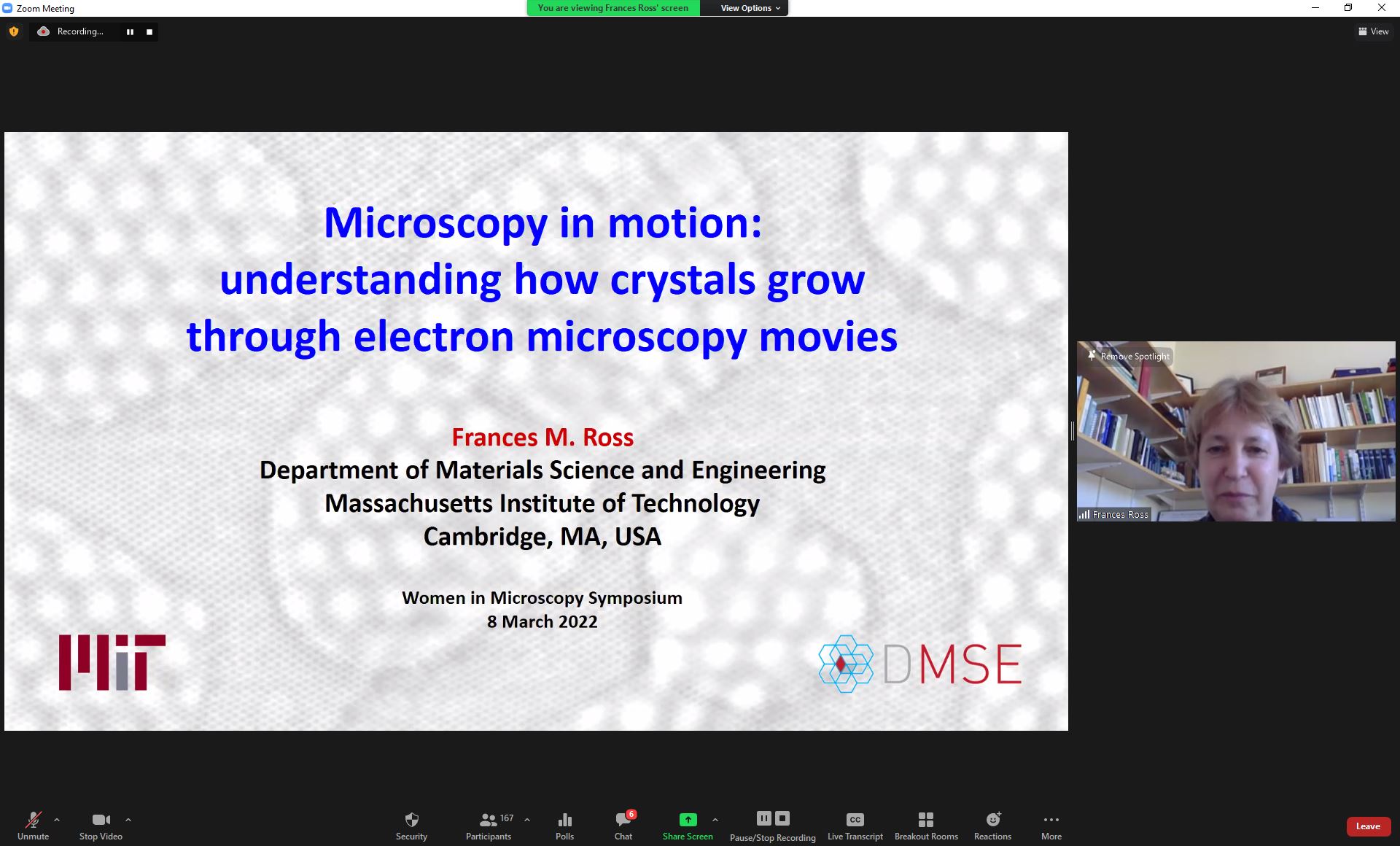
Frances M. Ross, PhD presenting her Keynote Address
Researchers presented their groundbreaking work on COVID-19, cardiac arrhythmia, microbial mineralization, and neural network analysis of large image datasets. The diversity of these topics reflected the interdisciplinary nature of microscopy. We aim to continue this trend of bringing together researchers with disparate focuses for future WiM conferences. Post talk questions from the audience and post event feedback inspired connections to the attendees’ work. Both the range of topics and the variety of backgrounds were noted as standout details of the event. “The short research presentations from the trainees were outstanding. Good breadth of topics, and phenomenal work being presented. Well done,” one attendee commented.
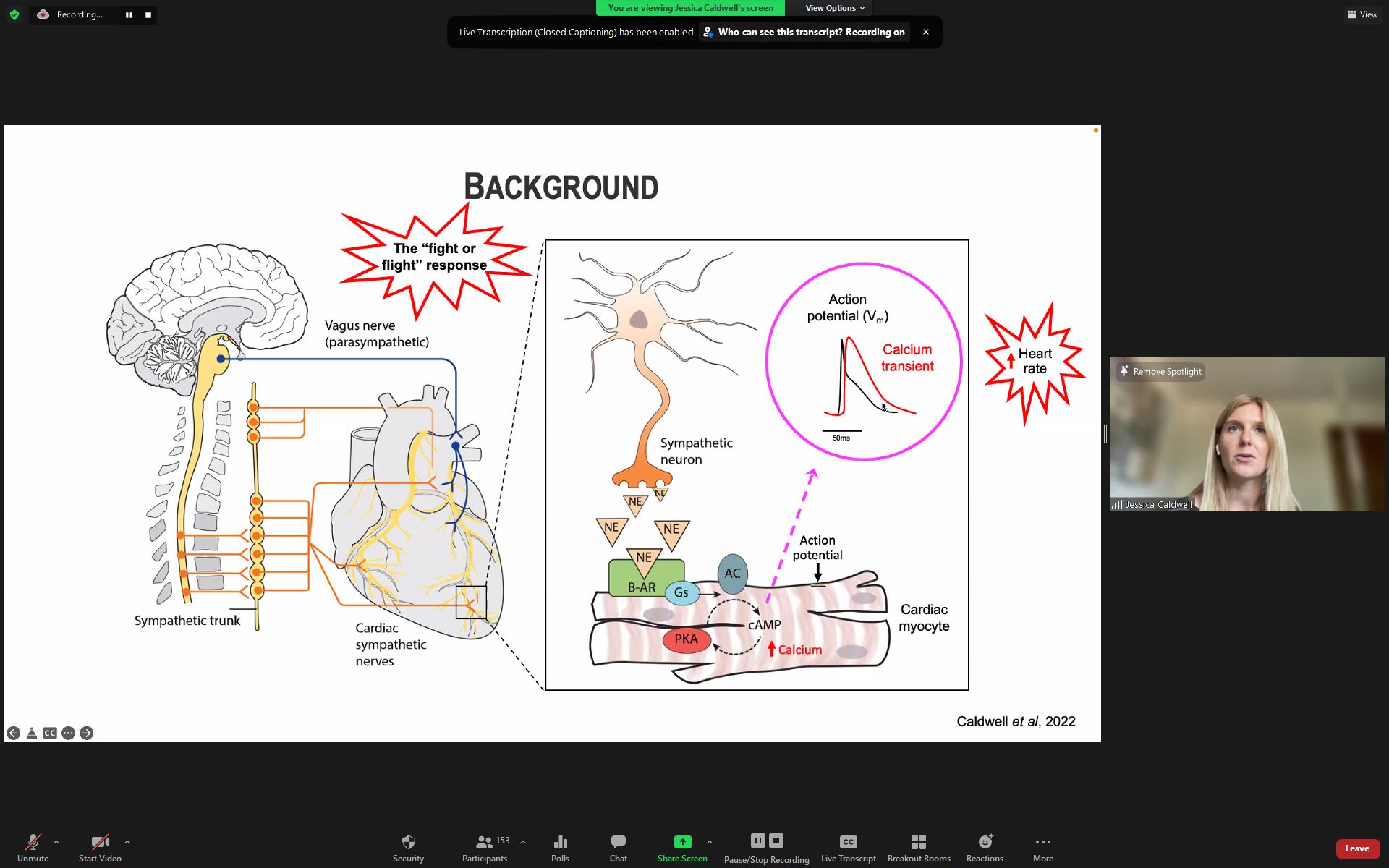
Dr. Jessica Caldwell, Postdoctoral Scholar, University of California, Davis presenting her talk:
"Using Macroscale Optical Mapping and FRET to Understand Cardiac Arrhythmia Mechanisms"
The research presentations were followed by three panel discussions that mixed professionals of diverse backgrounds under one unifying topic. Professionals from industry, academia, and federal laboratories discussed Work-Life balance, Career Navigation, and Diversity, Equity, and Inclusion.
Work-Life balance heavily focused on boundary setting and how to stick to them. One comment that stuck with moderator Elizabeth King was: “Remember that no can be a complete sentence.” The conversation also involved finding workplace cultures and environments that are a good fit in the interview phase as well as the importance of good teammates. Heather Rose, a TEM applications Engineer with Hitachi, touched on how engaged the audience was in the Work-Life balance panel, “In my breakout room, people who were not panelists were able to chime in and give their input/outlook which was very reassuring that everyone felt comfortable being there and were all very engaged.”
Audience participation was also present at the Career Navigation panel, where professional pressure and job searching was part of the discussion. The panel discussed their paths and the choices that brought them to their respective fields. Careers can be difficult to predict, especially when the interview cannot tell you more than being in the job itself. However, the one key takeaway from the panel was the importance of finding a good fit, which is possible given the vast number of positions, fields, and entire industries, even within the field of microscopy. One attendee commented on how reassuring the conversations were to her own experience: “Really enjoyed listening to other professional women talk about their experiences because honestly, I sat there and said to myself "Me too!". Someday we will have plenty of women mentors and opportunities available to us. I also thought it was great that I made a local connection through the chat. How great is that?”
The third breakout panel tackled the topic of Diversity, Equity, and Inclusion, moderated by Aisha Ghori Ozaki, the Director of Diversity, Equity and Inclusion, Northwestern University Office for Research. The major theme involved outreach efforts, re-entering the field, and the accessibility of virtual events. Dr. Treva Brown, a Physical Scientist at the U.S. Naval Research Laboratory talked about the importance of visibility in the field. A young black girl visited her lab and was stunned to see a black woman scientist decked out in pink goggles. Dr. Brown emphasized how important that moment was to her and the necessity of having diverse mentors that show the next generation that it is possible to be a scientist, even when the industry is so male dominated. The chat was filled with links and questions about outreach efforts and mentioned several programs for K-12 education both in the UK and US.
The event concluded with digital speed networking, which gave attendees an opportunity to connect with other professionals in the field. It created a sense of unity and connection, even as a global pandemic has restricted such opportunities to online. Despite this, the energy of the conference was supportive and warm from both attendees and speakers just like the prior year. “I am excited to see how much the conference grew from the first year and took on a life of its own,” said Co-Chair Stephanie Ribet, “The attendees and speakers represented a diverse collection of backgrounds and research interests and it was inspiring to see everyone come together. We look forward to continuing to work together.”
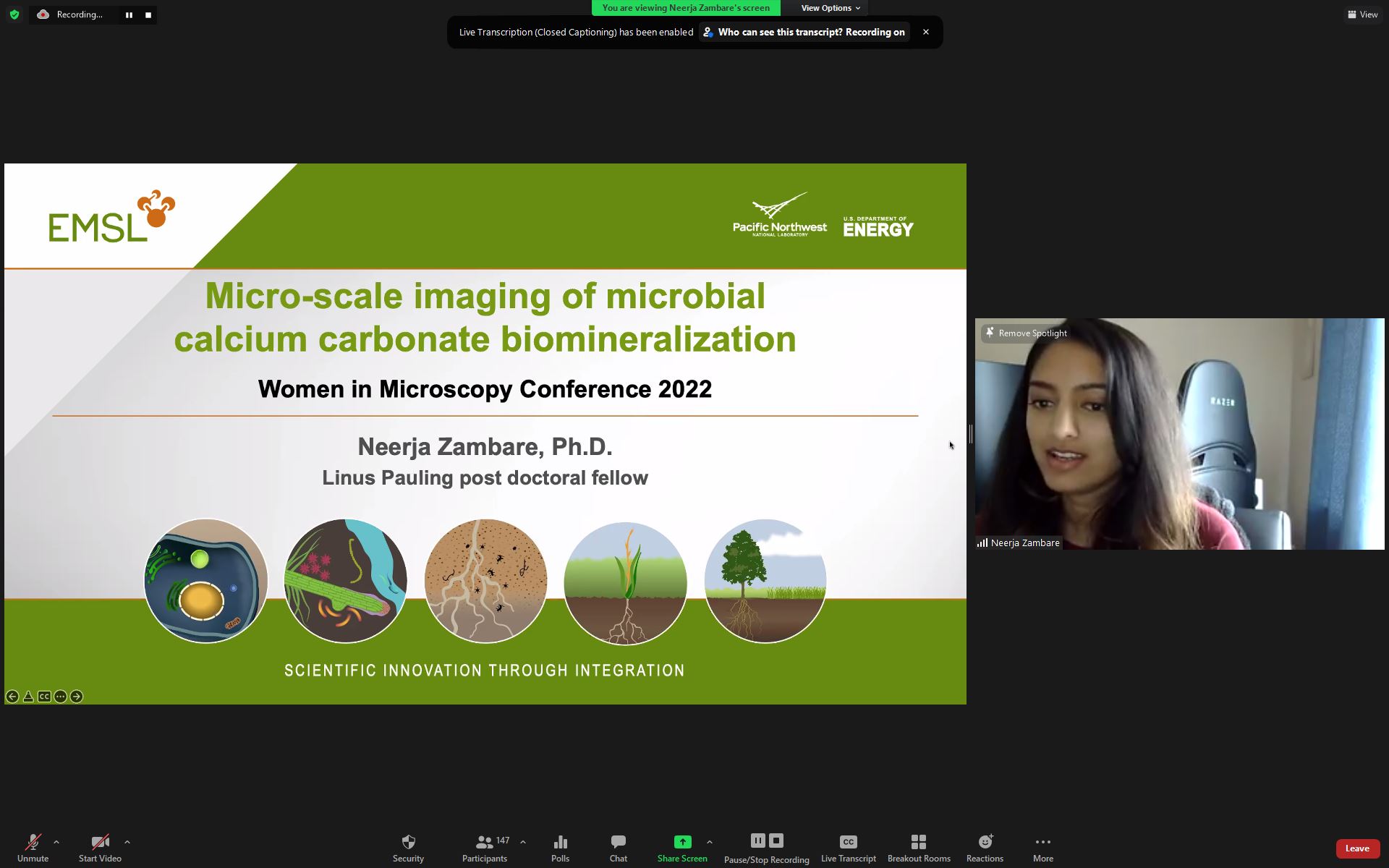
"Micro-scale Imaging of Microbial Calcium Carbonate Biomineralization"
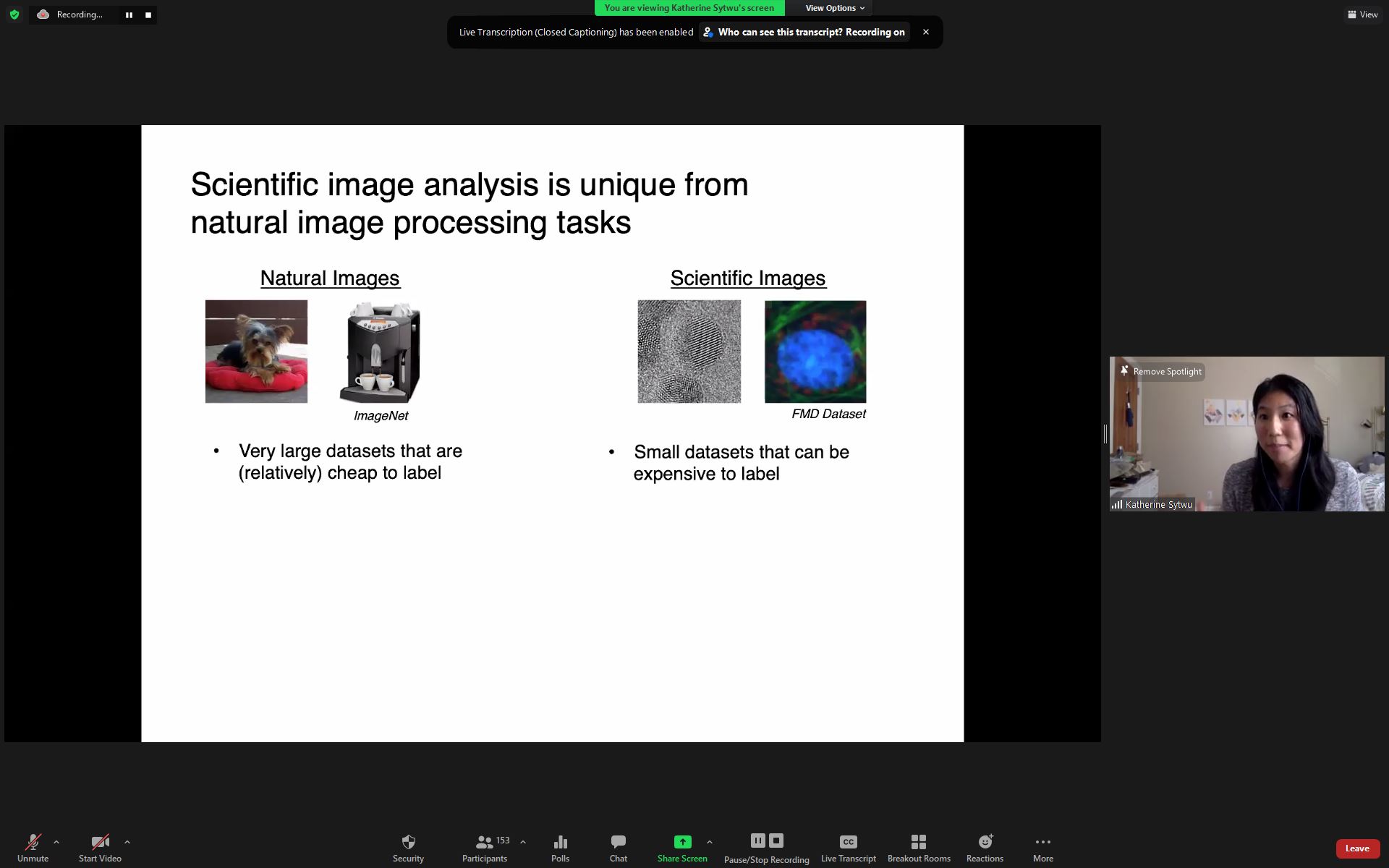
"Adapting and Understanding Neural Networks for Scientific Image Analysis"
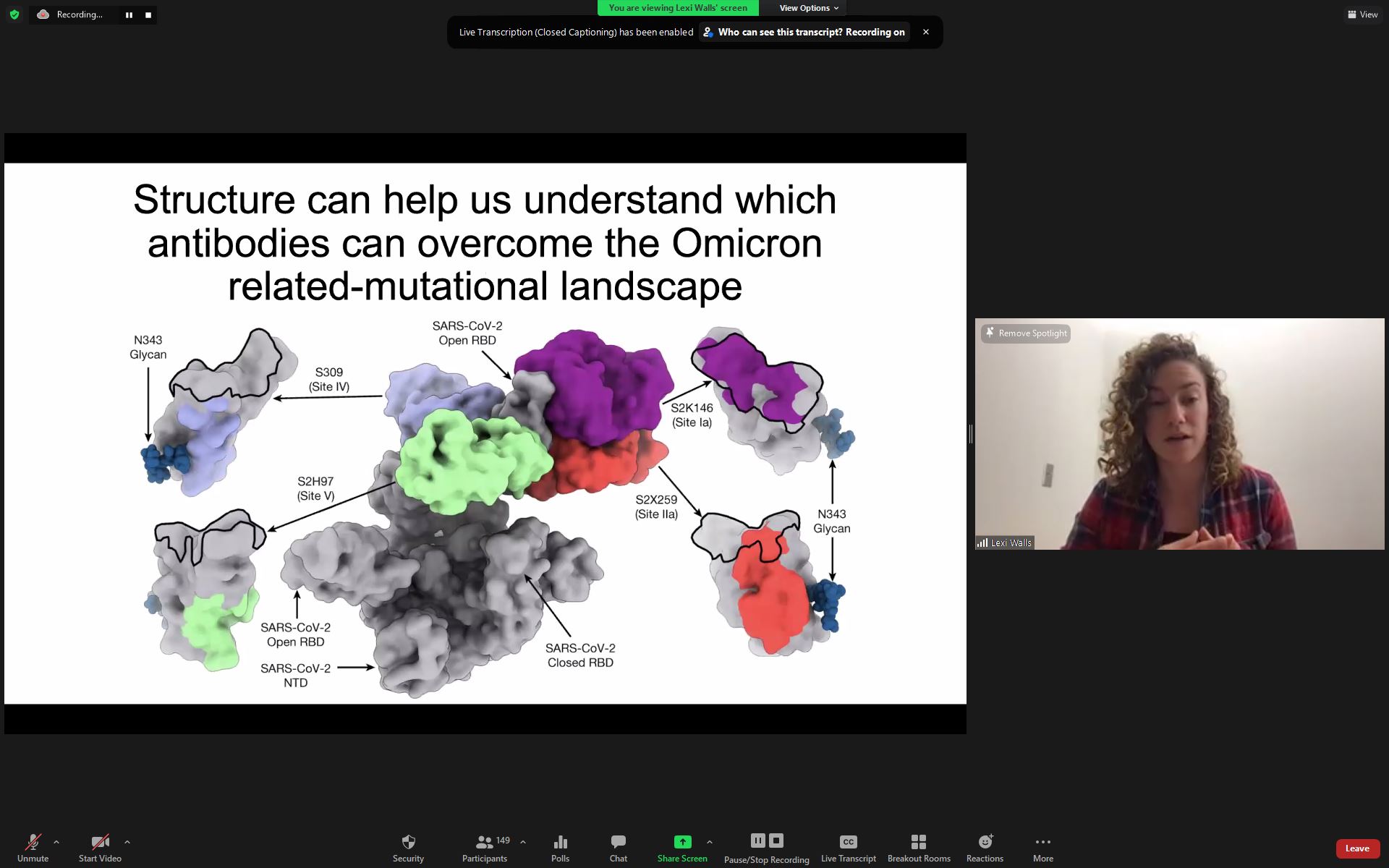
"Using Structure to Guide SARS-CoV-2 Vaccine Design"
